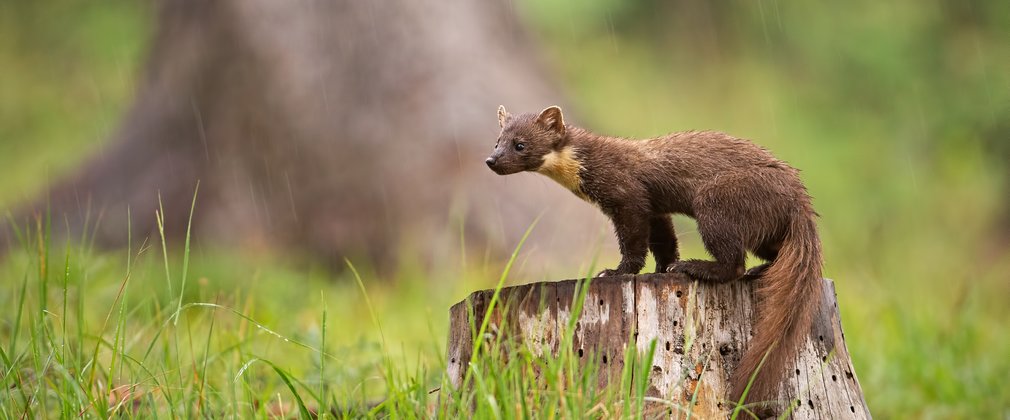- Inspiring People -
- 4mins -
- 859 views
Baby success for England’s first reintroduced Pine Martens
Efforts to reintroduce pine martens back to the Forest of Dean have just reached a major milestone — a number of the recently released females have given birth to kits.
England’s first reintroduced Pine Martens have had babies!
Combined efforts to bring pine martens back to the Forest of Dean have just reached a major milestone, according to Forestry England: a number of the recently released females have given birth to offspring. A short video of the cute kits frolicking and gambolling in the forest will definitely bring a smile to your face.

The hope is that a population will establish, spread and link up with Welsh pine martens
Forestry England, the agency responsible for managing and promoting the nation’s forests owned by the Government of the United Kingdom, say the project is the first formal reintroduction in England and aims to boost the recovery of pine martens in the country, led by Gloucestershire Wildlife Trust and Forestry England, with support from Vincent Wildlife Trust, the Woodland Trust and Forest Research.
Extensive hunting and loss of woodlands over the last two centuries had resulted in near extinction of the pine marten in England.
Pushed to the more remote parts of the UK, they became Britain’s second-rarest native carnivore, with their only remaining stronghold the North-West Highlands of Scotland. Since then the population has begun to recover well in Scotland, but has not yet made such a come-back in England.
In September 2019, the project team released 18 pine martens translocated from Scotland to the Forest of Dean, and thanks to around-the-clock radio tracking and trail camera monitoring, the team now know that at least three of the females have given birth this spring.
Source: ForestryEngland

Members of the public are unlikely to spot these solitary mammals
Pine martens mate during the summer months but then delay their pregnancy until spring when conditions are right. They do not necessarily breed every year, which is one of the contributing factors to their slow recovery from Scotland back into England and Wales.
Most pine martens give birth to around 2-3 kits. At about 6 weeks old the kits have their eyes open and start being weaned off milk onto solid food. Females bring prey such as voles, mice and small birds back to the den site to feed the kits.
As the kits get older they become more mobile and start to practise climbing. Initially, they are clumsy climbers and can fall out of dens, so it’s a busy time of year for females who are also out hunting for food to feed themselves and their growing kits for much of the night.
Members of the public are unlikely to spot these solitary mammals, which have exclusive territories and go out of the way to avoid each other, and people.
Thanks to their protected status by the Wildlife and Countryside Act (1981) and the huge support from the people of the Forest of Dean and wider Gloucestershire, pine martens are well on their way to returning to their native home for good.
The project has been made possible thanks to Scottish Natural Heritage and Forestry and Land Scotland, as well as the generous support of Forest Holidays.
Further information on the project can be found at Gloucester Wildlife Trust Project Pine Marten.
Source: ForestryEngland


